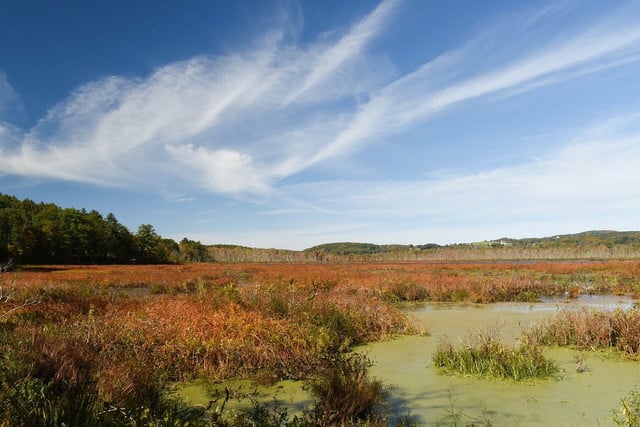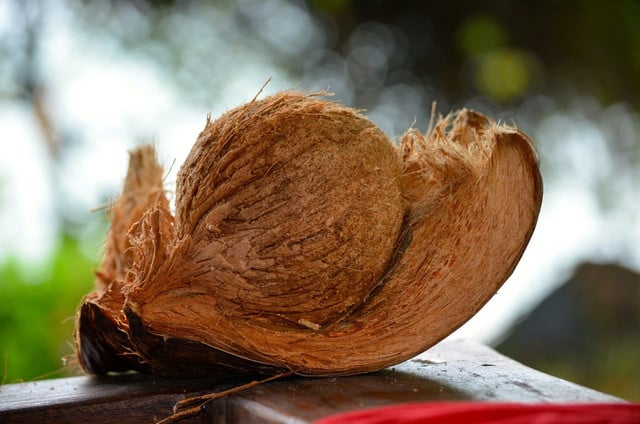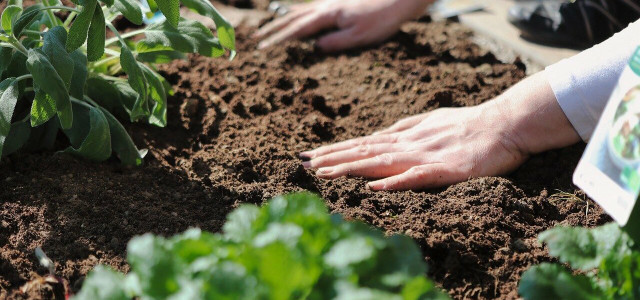Although it seems like a magic ingredient, is peat moss for lawns and gardening really a good idea? We'll explore some pros, cons, and sustainable alternatives.
What is Peat Moss? Benefits for Lawns and Gardens
Peat moss is dead plant material composed mostly of mosses that have partially decomposed over thousands of years in peat bogs. Peat bogs are wetlands primarily located in colder, tundra climates such as in Canada or northern Eurasia. The cold, wet conditions cause plant material to decompose incredibly slowly, often sinking into the water and eventually accumulating as several meters of peat. Since peat is so absorbent, bogs hold massive amounts of freshwater that eventually filters into streams and rivers. Peat bogs are also very nutrient-poor, meaning that the endemic species usually have unique adaptations to survive, such as carnivorous plants.
Due to its formation process, there are several benefits to using peat moss in lawns or gardens:
- Peat moss retains water, making it available to plants and preventing the soil from drying out.
- It prevents nutrients from leaching from the soil, allowing for less frequent fertilizing.
- Its “fluffy” texture allows for roots to grow more easily. This is why peat is often used for starting seeds or with indoor plants.
Drawbacks of Peat Moss for Lawns and Gardens



(Foto: CC0 / Pixabay / JackBulmer)
Though using peat moss for lawns and gardens has many obvious benefits, there are also several environmental concerns tied to its extraction:
- Peat moss is a non-renewable resource because it takes millennia to form.
- Peat moss must be dredged up from peat bogs, which are delicate ecosystems hosting endemic species and filtering massive amounts of freshwater.
- The dredging process destroys the bogs, which cannot completely recover due to the lack of water retention.
- Peat mining and transport require heavy machinery, which comes with a heavy carbon footprint.
- Peat bogs are carbon sinks. Because the plant material in peat moss doesn’t fully decompose underwater, it can store 4-25 times as much carbon as the same area of forest. This carbon immediately combines with oxygen when exposed to air to form CO2. Peat moss for lawns and gardens exhales an ever greater amount of CO2 since it is spread over a wide area.
- Because it is poor in nutrients, using peat moss used for gardening requires additional amendments, such as compost or fertilizer.
Peat Moss Alternatives



(Foto: CC0 / Pixabay / atlounge)
Since using peat moss for lawns or gardens incurs a massive carbon footprint, it is recommended to use more sustainable materials:
- Coconut coir is the fibrous outer husk of a coconut and offers the most direct replacement for peat moss. Like peat moss, coconut coir is lightweight and water retentive, while also being more sustainable since it puts a food industry byproduct to use. Coconut coir is usually sold in compressed bricks, which then expand with added moisture (available on Amazon**). Although more renewable than peat moss, coconuts are also subject to industrial farming and deforestation in tropical regions, meaning that there are still more sustainable options. Also like peat, coconut coir is low in nutrients, especially if pre-washed, meaning that additional fertilizers are needed.
- Compost is the quickest and most sustainable replacement for peat moss in lawns. It offers the same water retention and aeration as peat, while also providing far more nutrients, thus eliminating the need for fertilizers. For more details on how to start your own compost pile, check out What You Can Compost, What You Can’t — and Why.
- Leaf mold is an organic matter made up of fully decomposed leaves and offers the same benefits as compost. Although leaves usually take a year to decompose by themselves, you can gather them in massive quantities and leave them alone until needed. Adding them to existing compost or to grass clippings speeds up this process significantly. Read How to Compost Leaves for detailed strategies.
Read more:
- How to Use Eggshells as Fertilizer for Your Garden Plants
- Composting Grass Clippings: Put Garden Waste to Use
- Can You Compost Bread? Tips for Composting Bread
Do you like this post?







